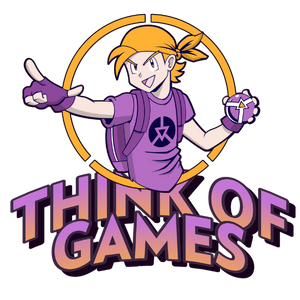We return to Bright Falls, the town where the popular writer Alan Wake vanished 13 years ago. It’s not just Alan who disappeared, but a number of people along with him. Recently, some of their bodies have been found—each one appearing to have been deliberately murdered, and none older than the day they disappeared. This is a case for the FBI, and agents Saga Anderson and Alex Casey are sent to investigate what the hell is going on in the isolated town.
In short, Alan Wake 2 is one of the most ingenious and artistic games in recent years. It’s a game with the depth of its own art-house film and the soul of its own rock album. The creators skillfully quote themselves in a circular fashion, consistently surprising players with new plot twists. It’s a game that masterfully blends psychological horror, noir detective clichés, action elements, family drama, and comedy that teeters on the edge of absurdity. It encourages you to constantly reassess everything you see, to doubt the very nature of reality itself.
What Are We Doing Here?
Part of the game is played as Saga, and part as Wake. While these two halves make up the same story, they offer distinct moods and gameplay experiences.
In Alan Wake 2, much of the action takes place in your mind. Alan Wake drifts through the shifting, dreamlike Dark Place, searching for cracks in space and time to break through. As Alan, you’ll navigate this nightmare, seeking inspiration to rewrite the story and find your way back to reality. The Dark Place is an openly hostile environment, filled with insidious shadows—some of which pose real threats. Yet, even there, you’ll encounter allies who will help you survive.
The Dark Place is defined by dark streets, treacherous back alleys, and endless hordes of shadows.
Meanwhile, in the real world, FBI detective Saga Anderson investigates the mystery of Alan Wake’s disappearance, trying to make sense of the strange events unfolding in Bright Falls. Saga not only helps players who haven’t experienced the first game catch up, but also brings the surreal nature of Wake’s experiences closer to something more human and grounded. Her action scenes, though still challenging, are more forgiving. Between shootouts, you’ll encounter playful riddles, like ‘lullabies,’ and uncover hidden snippets of information about the game world.
Saga’s gameplay is more exploratory, offering a chance to experience picturesque settings and showing a more tranquil side of the game world.
 Two Sides of the Same Story
Two Sides of the Same Story
Both Alan and Saga have boards—Alan, as a writer, is trying to craft his own escape with the player’s help, rewriting the scenes he finds himself in with new ideas. Meanwhile, Saga is piecing together this story, reading it in an attempt to figure out how to save her reality.
One location in the game looks entirely different depending on the scene Alan has written into it. You can only ‘level up’ by exploring the game world, but this works in fundamentally different ways for each character. Alan strengthens himself and alters the world using clearly defined Words of Power, while Saga imbues weapons with the dreamlike logic of Alan’s manuscripts. For players looking to engage further with immersive worlds, signing in to Crusino Casino login offers an additional layer of experience, where you can dive into dynamic environments and test your skills in new and exciting ways.
On the Surface
When it comes to the more superficial aspects—the technical implementation—it’s nearly flawless, aside from a few bugs.
The combat mechanics resemble those of the first game, but the battles feel much more dramatic due to the shift in genre towards survival. The scarcity of ammunition, the strength of enemies, and the fundamentally different weapon mechanics make the shootouts genuinely tense. If possible, try using a DualSense controller, which is fully compatible with the PC version and adds a lot of tactile detail to the combat experience.
Graphically, the game makes a huge leap forward, even when compared to the relatively recent CONTROL. The staging and camera work rival that of a full-fledged Hollywood film. And the facial animation is something that would impress any modern developer.
Since this is a game about a writer, we can’t overlook the quality of the writing, which is noticeably better than in any of Remedy’s previous titles. Random notes, letters from others, official documents—all of it feels organic, believable, and crucial for understanding the setting and the events unfolding around us. Wake’s writing style is easy to read, almost like flipping through a new Stephen King novel. But you don’t have to read it yourself—Wake can read his pages aloud for you, delivering them with all the right accents.
A Finnish Heart
Speaking of Stephen King’s works… Alan Wake 2 taps into a wide range of nostalgic feelings. This game will resonate with anyone who fondly remembers shows like Twin Peaks, True Detective, The Twilight Zone, and The X-Files.
But above all, it is a VERY Finnish game. From the nature that evokes Scandinavia to many of the key characters being part of the Finnish diaspora or coming from neighbouring Sweden (which once ruled Finland), the game is deeply rooted in Finnish culture.
In-game commercials introduce you to important aspects of Finnish life, including the cherished tradition of staying home. Brothers Ilmo and Jakko Koskela refer to Finnish customs, talk about how Finns drink beer, and sprinkle in Finnish words. However, the character of Ahti steals the show, often speaking in Finnish or translating Finnish proverbs literally.
Scandinavian and Finnish mythology has appeared in Remedy’s games since the original Max Payne and the local RagnaRock club. In Alan Wake, characters like Thor and Odin Anderson, elderly rockers, played a significant role. The mythology expands even further with Ahti’s appearance in CONTROL (the name of the sea god in Finnish) and continues in Alan Wake 2, where we even learn how Odin Anderson lost his eye.
Self-Citation
Perhaps more than modern American horror classics or Finnish mythology, Alan Wake 2 draws heavily from Remedy Entertainment’s own body of work. The game acts as a hub where the achievements and themes of many of the studio’s previous titles converge.
The Federal Bureau of Control from CONTROL makes its presence felt in Alan Wake 2 on several levels. The dark version of New York City bears a strong resemblance to the Max Payne games. And, of course, the character of Alex Casey is a nod to the first Max Payne, where the main character was portrayed by the same combination of actors: James McAffrey provided the voice, and Sam Lake modeled for the character.
Alan Wake 2 was also referenced in Quantum Break, from the low-budget trailer to the quirky notes on the whiteboard.
Sheriff Breaker in Alan Wake 2 is played by actor Sean Ashmore, who portrayed the main character in Quantum Break, and who also keeps a whiteboard with working theories about his investigation. Mr. Door is a reminder of Martin Hatch from Quantum Break, a character played by the late Lance Reddick, who moved between realities. David Harewood, who plays a similar character in Alan Wake 2, speaks in a manner very reminiscent of Reddick, though he is British.
In Alan Wake Remastered, a reference to Watery, the Finnish village in Alan Wake 2, was added. The CONTROL DLC, AWE, included a story about Alan Wake, and the local mystical janitor Ahti goes on holiday to Watery, which then leads directly to Alan Wake 2, where the same Federal Bureau of Control makes an appearance.
Did we forget to mention that Alan greets Ahti the same way the protagonist of CONTROL does?
In general, you can see how Remedy’s deep well of references strongly encourages a search for meaning in the game’s details—and they do not disappoint.
In fact, the mere presence of the studio’s creative director, Sam Lake, in the frame feels like a reward for everything he’s created so far. This impression is only strengthened after his speech at The Game Awards.
Surprisingly, despite the large number of references, the game never feels like empty self-indulgence or the recycling of old ideas. It offers fresh concepts, and just as importantly, it shows how they are introduced.
An Ode to Art
Alan Wake 2 is not just a video game; it’s a creation that blurs the lines between different forms of art. Never before has there been such a seamless transition between a three-dimensional interactive experience and live-action sequences. The shift is almost immediate—once you begin, you naturally accept it as part of the game. Towards the end, you’ll even find yourself watching a short film that sits somewhere between David Lynch’s surrealism and Northern European arthouse cinema.
The film Night Without Night will challenge the player, especially if they try to make direct connections between the film’s plot and the game’s events. The developers constantly play with the concept of art mimicking reality and vice versa. The death of the author—both metaphorically and literally—is a central theme. The symbols of the tree and the word unexpectedly mirror each other, with Sam Lake (who plays himself in the game) doubling as both an artist and an actor in the story he created. This level of self-reflection is layered and may resonate most deeply with those who work in writing, screenwriting, or poetry, where the intersection of language and art is particularly significant.
A Musical Hit
The music in Alan Wake 2 deserves special mention, as it plays a crucial role in the narrative itself. The band Poets of the Fall, who have contributed to previous Remedy games, returns as the fictional band Old Gods of Asgard—retired rockers with their own backstory. But in Alan Wake 2, Poets of the Fall outdo themselves, delivering several rock tracks that will leave you wanting to listen again and again, even after you’ve finished the game.
The collaboration doesn’t stop with Poets of the Fall. Remedy’s approach to the soundtrack is a revelation, involving a variety of artists whose contributions elevate the music. Each track feels essential, with its mood and lyrics adding layers of meaning to the game’s narrative. At the end of each chapter, you’ll find yourself listening to a unique song that captures the essence of that part of the game.
Among the featured artists is Poe, who came out of retirement specifically to work with Remedy. Her contribution includes “This Road,” a haunting piece of trip-hop that perfectly sets the tone for certain moments in the game. From Poe’s ethereal style to the pop influences of RAKEL’s “Follow You Into The Dark” and the alternative rock tones of ROOS + BERG’s “No One Left to Love,” the variety of genres enriches the game’s atmosphere.
An interesting tidbit is that Poe is the sister of Mark Danielewski, author of House of Leaves, a book that Sam Lake, the game’s creator, admires. It was Danielewski’s influence that inspired Poe to return to music, and her track “Haunted” from her album of the same name contributes to one of the game’s most memorable moments. This story of collaboration mirrors the creative journey of Alan Wake 2, where both the game and the people behind it weave together a tapestry of interconnected ideas and emotions.
In Alan Wake 2, Remedy masterfully combines elements of animation, cinematography, music, theatre, and narrative to create a compelling, complex story. It’s a game that doesn’t just entertain—it immerses players in a world where every detail matters, inviting them to experience it as an uncompromising yet deeply engaging piece of art.
Two Theories
Perhaps the greatest value of Alan Wake 2 lies in how it encourages speculation. To truly understand what’s happening in the game, you need to pay close attention. The main characters take on multiple roles, with one example being the at least four different versions of Alex Casey scattered across several layers of reality. What may initially appear as a traditional survival horror game is, in fact, a story that doubles as a puzzle—one that you’ll enjoy solving. Every piece of dialogue, every note, adds depth and insight, enriching your understanding of the world.
Alan Wake 2 can be interpreted in at least two fundamentally different ways. One theory suggests that the events remain grounded in a more traditional detective and action story, with the characters battling a paranormal phenomenon. On the other hand, there’s another theory, supported by several clues throughout the game, that everything—including Alan Wake himself and even the year 2023—might exist solely within the fictional world of one of the game’s minor characters. This interpretation introduces an existential horror element to the story. The beauty of Alan Wake 2 is that you could spend hours debating which theory is closer to the truth (or the creators’ intent). However, the definitive answer will likely only emerge later, once all the layers are revealed.
This review was written by two authors—Dmitry and Daniel—who played Alan Wake 2 in parallel. This dual perspective is probably the best way to experience the game, where comparing and contrasting the two journeys truly enriches the understanding of the narrative.
We also recommend alternating between playing as Alan and Saga (using a save point). This approach gives you a unique chance to see how their paths mirror each other and how their journeys intersect, adding an extra layer to the narrative that would be a shame to miss. Plus, it helps break up the gameplay.
Does the Story Continue?
The original Alan Wake was designed to encourage replayability, with new pages of the manuscript unlocking on Nightmare difficulty, expanding the world and enriching the story. In Alan Wake 2, this opportunity is available to all players once they complete the game at any difficulty level. By selecting The Final Draft mode from the menu, you can carry over all the weapons you’ve acquired and uncover significant new details of the story during your replay. But we’ll save the full details of that for later.
Additionally, there are two expansions on the horizon: Night Springs and Lake House.
Some of the puzzles in Alan Wake 2 are tougher than others, with a few that might even require solving algebraic equations.
Night Springs is a show inspired by The Twilight Zone (or for younger players, Black Mirror). The show was also referenced in the original Alan Wake, where episodes connected directly to the story of Alan, who was its creator. In Alan Wake: American Nightmare, the Night Springs series was adapted as part of the mission to defeat Mr. Scratch. The series was also mentioned in Control, where the Federal Bureau of Control sought to relaunch it, attempting to link real paranormal phenomena to its fictional stories. In Night Springs, we can expect even stranger stories and more opportunities to manipulate reality.
Lake House, much like the previous expansion, will keep players hooked, especially during the penultimate chapter of Saga’s storyline. This expansion also connects Alan Wake 2 to the broader Control universe, acting as a bridge to the upcoming Control 2.
Enjoy this dark and twisted tale—it’s well worth your time! It’s a horror story with unexpected moments of humour and even a musical number thrown in for good measure. The plot is full of charades and playful moments—familiar yet always revealing new surprises. Even after the credits roll, the game keeps its secrets close, ensuring that the experience lingers long after you’ve finished.
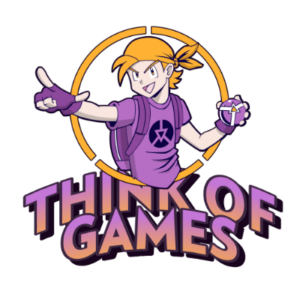
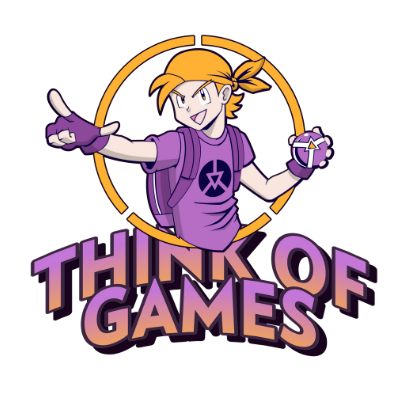
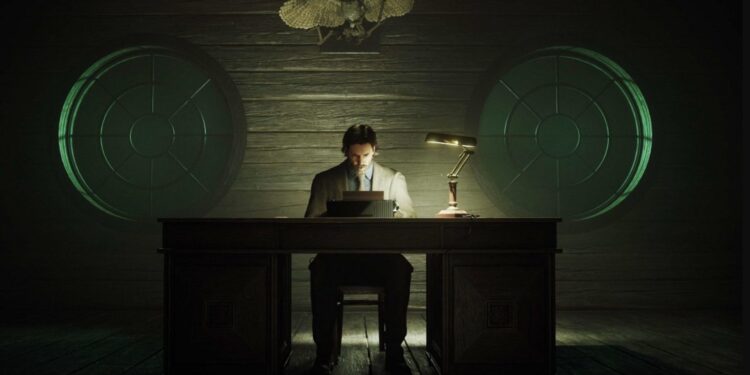


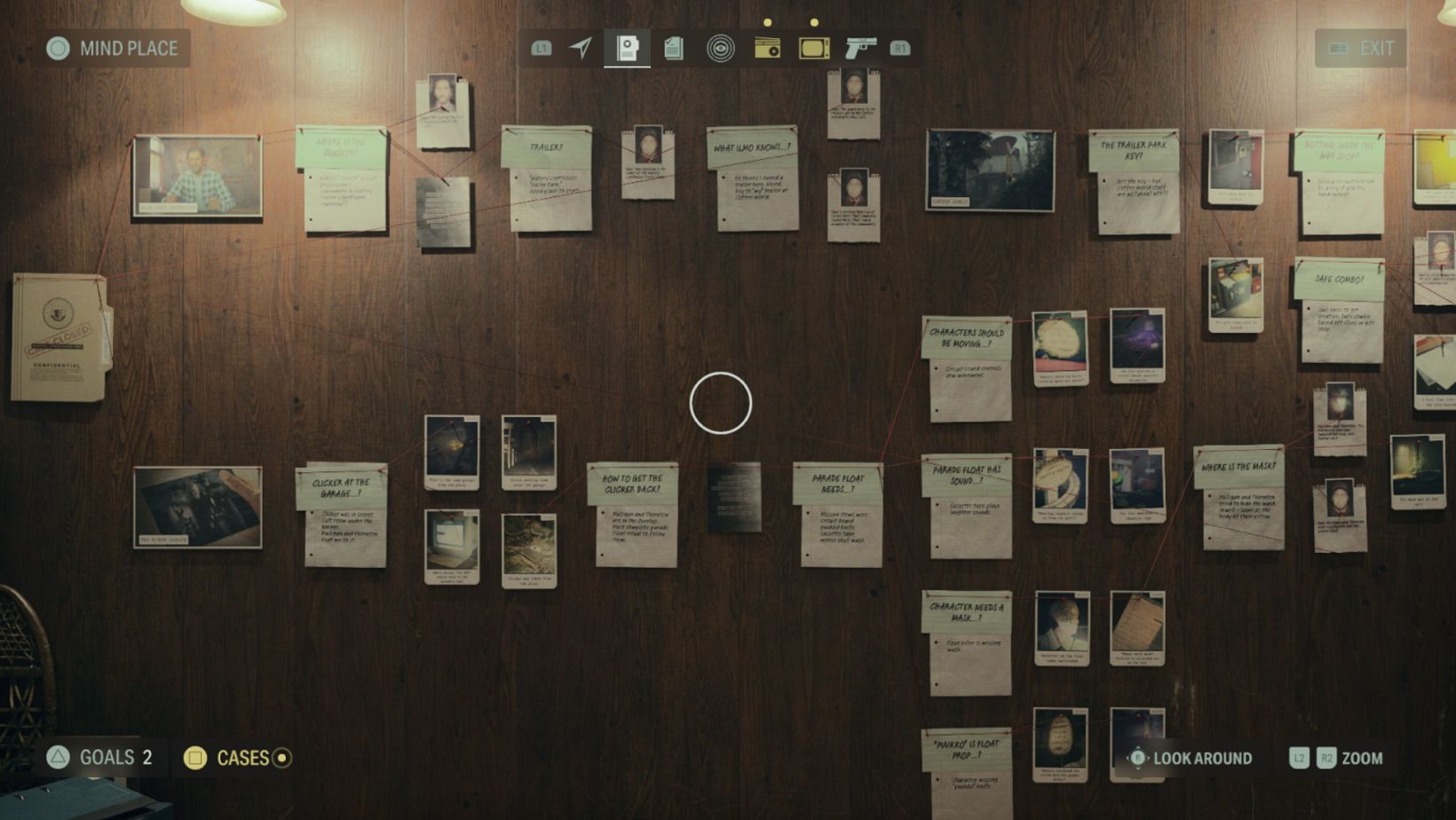 Two Sides of the Same Story
Two Sides of the Same Story









